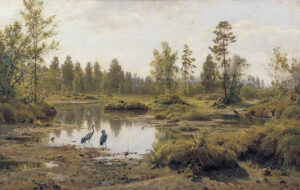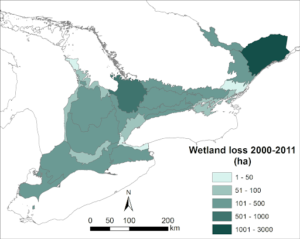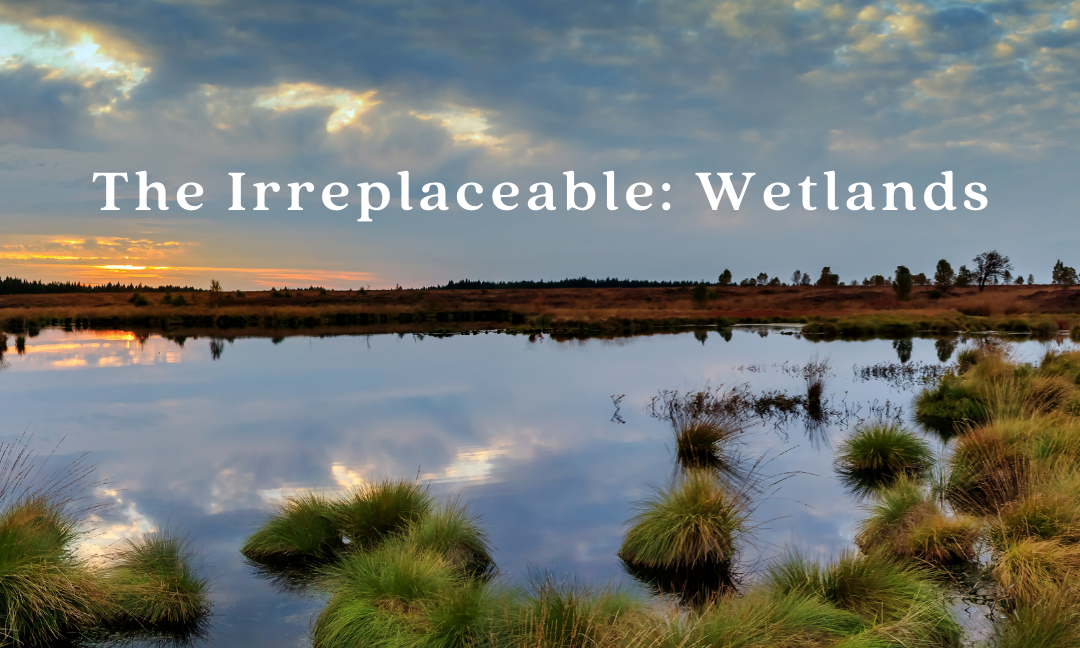Author: Sharon Wei
Editor: Emily Cheng
Graphic Designer: Rayna Almas
Publisher: Jumana Ismail
Wetlands are among the most productive and monetarily invaluable ecosystems on the planet. They comprise a diverse array of terrestrial and aquatic life. Not only are these biomes a residential and breeding ground for up to 40% of the world’s species, but their ecosystem services also provide numerous benefits for humanity. Unfortunately, wetlands are one of the most globally threatened ecosystems and are often unheeded even when their significance is comparable with rainforests and coral reefs.
What are wetlands and why are they important?
 All environs with land submerged in water permanently or seasonally are called wetlands. Seasonal wetlands don’t always have constant water levels – in fact, they may go dry, get flooded, or be burned by prairie fires. Wetlands play a crucial role during floods and droughts, as they retain water from snow, rainfall, and floods to be utilized during the dry season. Not to mention, wetland vegetation prevents water from eroding soil quality.
All environs with land submerged in water permanently or seasonally are called wetlands. Seasonal wetlands don’t always have constant water levels – in fact, they may go dry, get flooded, or be burned by prairie fires. Wetlands play a crucial role during floods and droughts, as they retain water from snow, rainfall, and floods to be utilized during the dry season. Not to mention, wetland vegetation prevents water from eroding soil quality.
Wetlands are carbon sinks – sequestering carbon; that being said, once filled or burned, they release centuries of stored carbon into the environment. Filled and burnt peatlands currently account for 10 percent of global carbon dioxide emissions.
The most common types of wetlands are marshes, swamps, bogs, and fens.
1. Marshes
Marshes are defined as wetlands continually immersed in water. They sustain a myriad of plants and wildlife, disproportionate with their size. Non-tidal freshwater marshes are the most prevalent wetlands in North America and are one of the most productive ecosystems on earth. Marshes recharge groundwater supplies and provide water to streams in moderation. Nitrogen and phosphorus in fertilizer runoff, which would otherwise become pollutants, are consumed by marsh vegetation and microorganisms for growth.
2. Swamps
Swamps are any waterlogged areas dominated by trees. Various birds, fish, reptiles and amphibians depend on this habitat. Swamps protect drylands from excessive flooding and function as a natural water treatment plant. Plant matter and soil in the area absorb impurities in the water to be consumed by plant roots or stored at the bottom of the swamp as sediment.
3. Bogs
Bogs are one of North America’s most distinctive types of wetlands. Due to poorly drained conditions, plant growth is limited as they are compressed and decompose, which results in the accumulation of peat mosses. As the area is less nutrient concentrated, biodiversity in bogs is fairly low. Bogs prevent downstream flooding by absorbing precipitation and have been recognized for their aptness of storing large amounts of carbon in peat deposits.
4. Fens
Fens are peat-forming wetlands that receive water from precipitation and underground. They are richer in nutrients and dissolved minerals in contrast to bogs, so peat accumulation is slower and less dense. Like bogs, fens reduce the risks of floods and improve water quality.
Canada’s wetlands cover 129 million hectares which is roughly 13% of the terrestrial area and nearly one-quarter of the world’s remaining wetlands. Ontario has around 35 million hectares of wetlands. Before European settlement, it was estimated that 25% of terrestrial land in Southern Ontario was composed of wetlands. By 2002, 72% of the area had been converted to support urban development. “Wetlands near large urban centres are particularly at risk and have suffered severe losses. It has been estimated that less than 0.2% of Canada’s wetlands fall within 40 km of urban centres,and that 80 to 98% of wetlands in or adjacent to major urban centres have been lost” (biodivcanada, 2021).

Why are wetlands endangered?
The world’s remaining wetlands are threatened by human activities as economical gain trumps ecological preservation. With the rise in demand for urbanization and agriculture, more fertile land is being converted to sustain the growing population. Filling and drainage of wetlands permanently destroy a biodiverse ecosystem. Chemical waste disposal and excessive sediment build-up degrades soil and water quality. Dams disrupt the flow of water to wetlands, which diminishes habitable areas. Climate change warms surrounding temperatures and increases the frequency of rainfall and flooding; tipping the elemental balance of the habitat.
To conclude, wetlands have been titled the ‘biological super systems’ because of the nutriments that are supporting an incredible amount of biodiversity. In the past, wetlands were viewed as unproductive and the origin of disease-borne pests. As new studies are being conducted, their benefits for humanity are gradually being brought to light. As an individual, you can support wetland conservation by learning about its importance and spreading awareness! Visit the North American Waterfowl Management Plan (NAWMP) website for more information on what actions are being done to protect the remaining wetlands.
Sources:
https://www.aquarium.co.za/blog/entry/11-reasons-why-wetlands-are-vital-for-humans-and-animals
https://www.worldwildlife.org/habitats/wetlands
https://www.nationalgeographic.org/encyclopedia/wetland/
https://www.gwp.org/en/GWP-Mediterranean/WE-ACT/News-List-Page/2021/wwd-2021-gemwet/
https://unfccc.int/news/wetlands-disappearing-three-times-faster-than-forests
https://water.unl.edu/wetlands
https://www.worldatlas.com/articles/what-is-the-importance-of-swamps.html
https://www.epa.gov/wetlands/classification-and-types-wetlands#undefined
https://www.hww.ca/en/wild-spaces/wetlands.html
http://www.wetlands-initiative.org/high-biodiversity
https://biodivcanada.chm-cbd.net/ecosystem-status-trends-2010/wetlands
https://www.nrcan.gc.ca/maps-tools-publications/tools/geodetic-reference-systems/water/16888
https://www.mlakes.org/wetlands
https://storymaps.arcgis.com/stories/f377390306a14c8791927c0918d90bf6
https://www.ontario.ca/page/wetland-conservation-strategy
https://sobr.ca/indicator/loss-of-wetlands/
Images:
https://sobr.ca/_biosite/wp-content/uploads/Wetland-loss-ha_2-1024×817.jpg
https://commons.wikimedia.org/wiki/File:Marsh._Polissia.jpg

